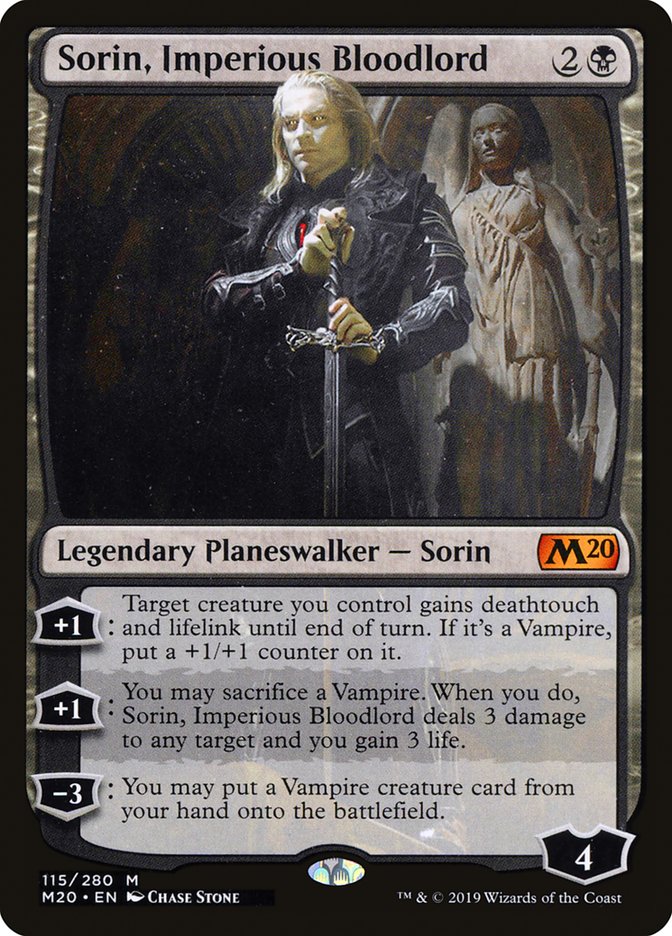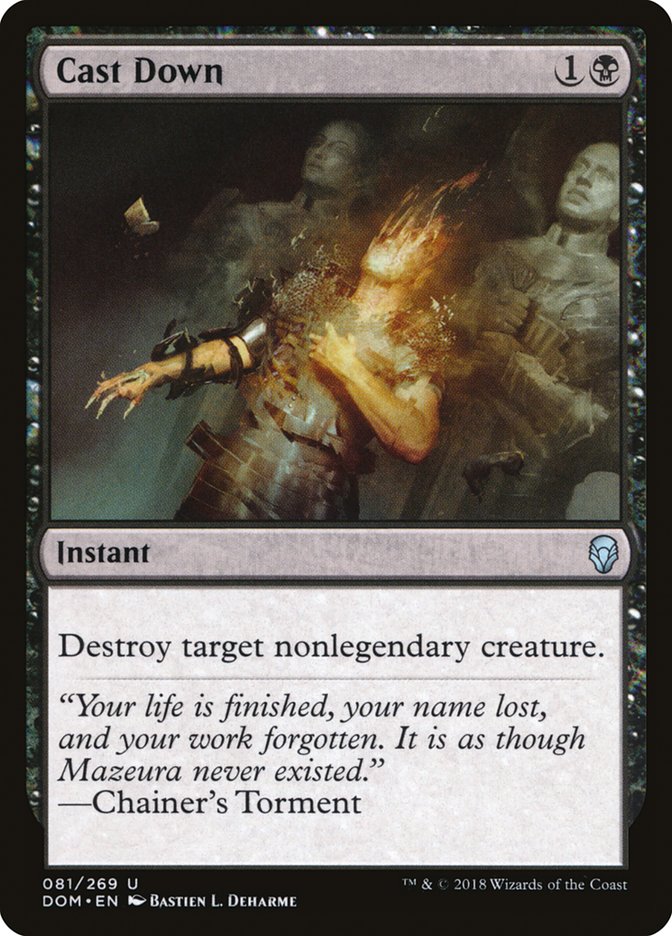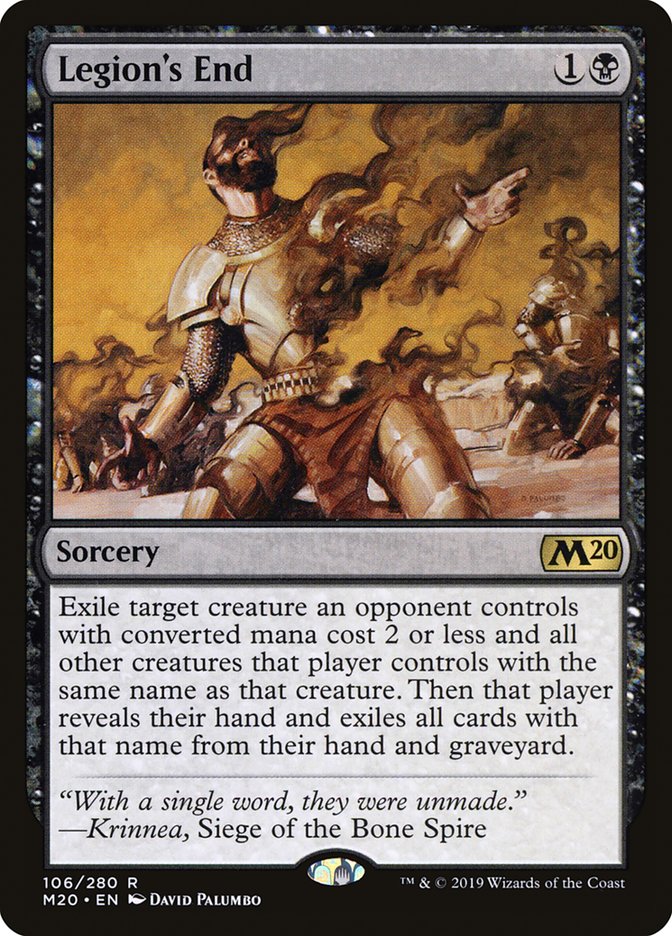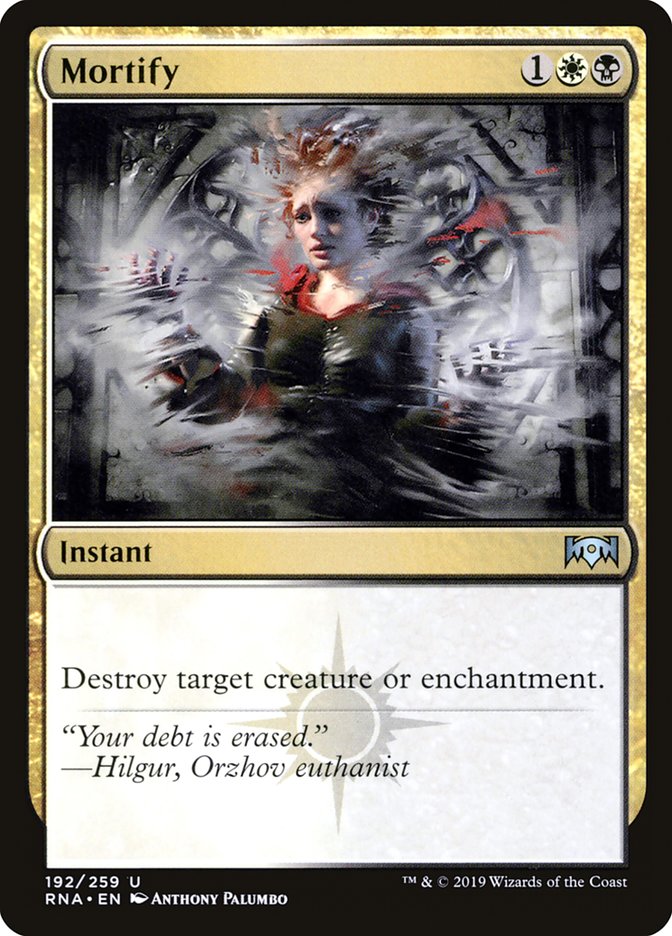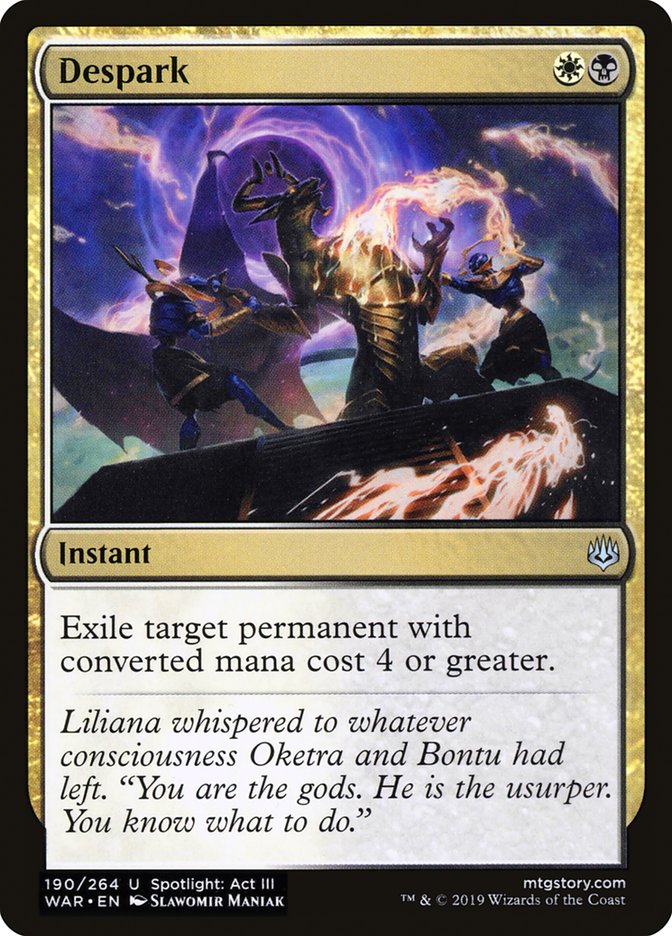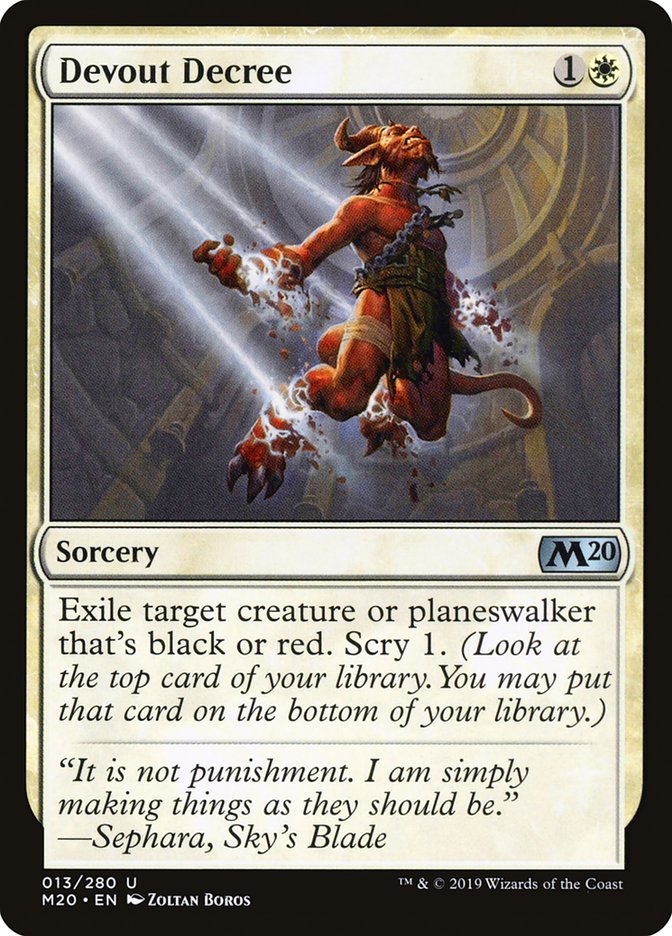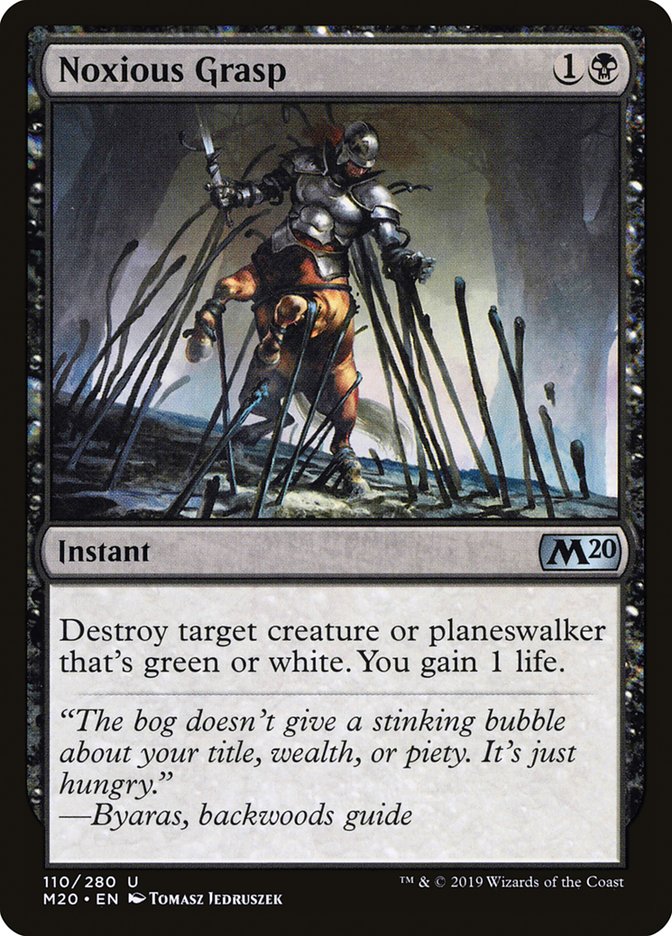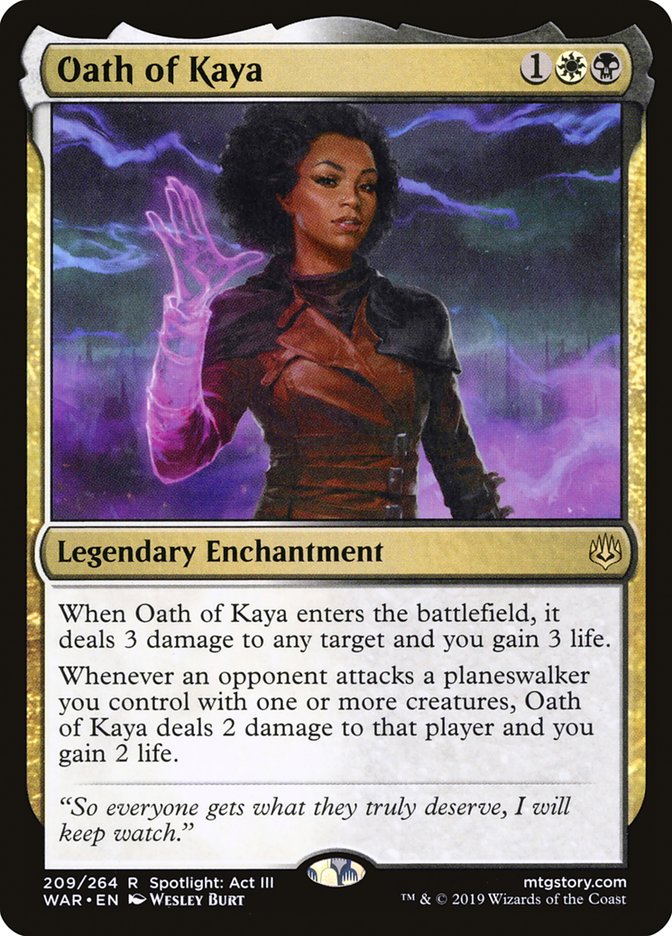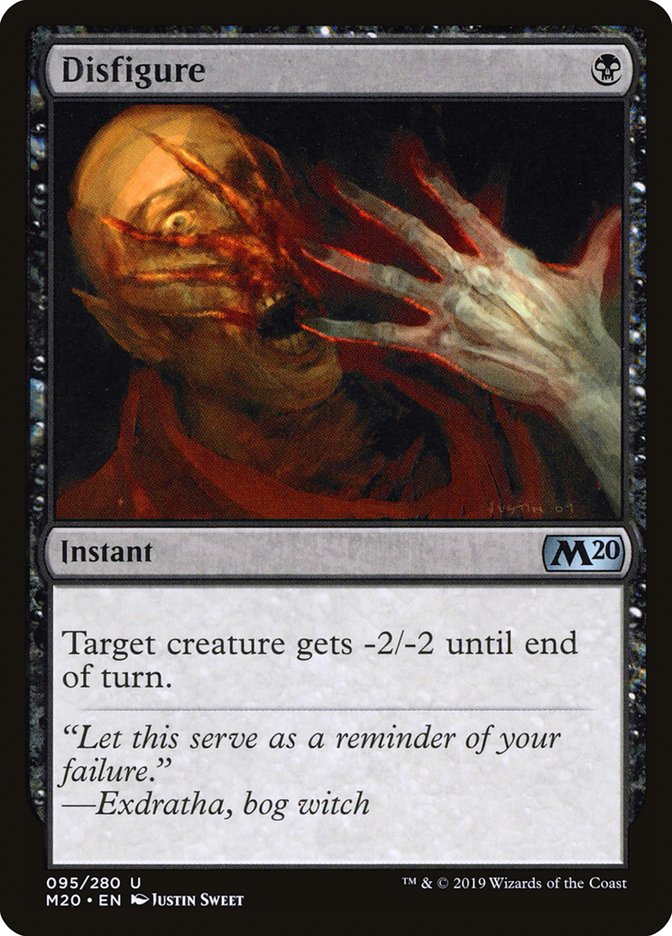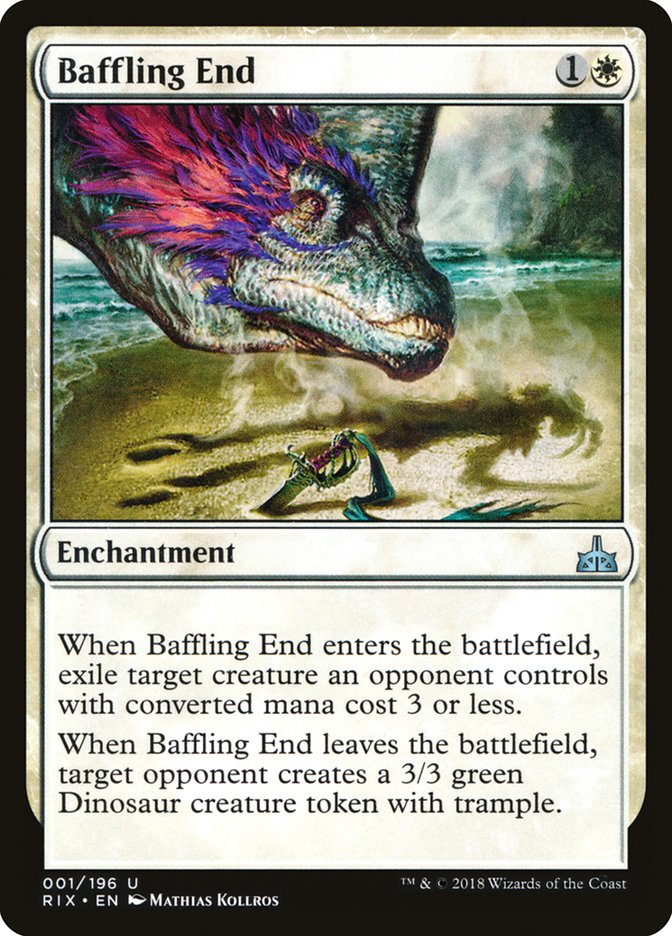Two weeks off from tournaments always feels like an eternity for someone who’s been on the grind as long as I have, and after a much-needed week off, I’ve been getting back into the swing of things in preparation for the Team Constructed Open in Richmond this weekend.
Normally, that would mean brushing up on Modern, aka figuring out which flavor of Hogaak to play, but in a break from normalcy, my team has me in the Standard seat for Richmond, and that makes my decision much more interesting.
That said, Core Set 2020 Standard has converged around a top tier of Bant Scapeshift and Orzhov Vampires, with a broader selection of decks that, while viable, are a notch or two below these powerful options. As an aggressive player, I naturally favored the bloodthirsty tribe, especially given how powerful Sorin, Imperious Bloodlord is.
Seriously, why isn’t the Lightning Helix ability a -1? Was there a typo in the final file? Even with how powerful the -3 ability is, I’m often praying that my opponents use it just so I have a chance of removing the planeswalker in combat.
This late in a format’s evolution, the edges to be gained are small. They often come with proper tuning, and when it comes to tuning, even in aggressive decks, the most dynamic portion of an archetype is the removal suite.
One of the most significant shifts in how Magic sets are designed is the more concerted effort on the part of the designers to craft removal spells with specific holes, making them ineffective against a certain subset of the threats in the environment, thereby giving other players recourse against those answers.
But coupled with this seeming powering-down of the answers in Magic comes with the printing of a more diverse set of answers, so once one removal spell becomes ineffective, another becomes well-positioned. This shift has contributed to the dynamism that is typical in Standard over most of the last decade, and even in a well-explored and understood metagame, there’s room to maneuver one’s answers to gain an edge on the rest of the field.
In a deck like Orzhov Vampires, the room for removal is slim, since you need a high density of threats, but there are plenty of options to choose from and it’s important to select the right mix, lest your aggressive creatures be stonewalled by a single blocker on Turn 3 or 4.
Having a well-rounded removal suite means mixing and matching the various options so that you have outs to as many threats as possible, weighing just how many outs based on how common each threat is. That’s a trickier proposition than jamming four copies of Lightning Bolt or Swords to Plowshares and calling it a day, and requires digging through the various options and weighing their strengths and weaknesses against the common threats in the metagame.
Let’s start by looking at the commonly played options and a few other removal spells I’m interested in at a glance.
The Bread and Butter
- Strengths: No size restriction, instant-speed
- Weaknesses: Feather, the Redeemed; Lyra Dawnbringer; Field of the Dead; Adanto Vanguard
- Strengths: Answers Zombie tokens from Field of the Dead, potential card advantage
- Weaknesses: Deputy of Detention; Feather, the Redeemed; Hostage Taker; Champion of Dusk; Rotting Regisaur
- Strengths: Functional against creature-light decks, no target restrictions
- Weaknesses: Field of the Dead
Cast Down has been the most commonly played removal spell in Vampires decks and that’s not surprising given how ubiquitous it’s been throughout its time in Standard. It has the best combination of efficiency and versatility, which is exactly what you look for in a maindeck removal spell.
It’s lost ground recently to Legion’s End, which matches up quite well against both of the top decks in the metagame, but we’ve since seen a rise in Deputy of Detention to take advantage of the shift away from Cast Down. The other advantage Cast Down has over its counterpart is in the Jund Dinosaurs matchup, where Legion’s End only answers the early mana creatures, while Cast Down is an all-star. Right now Jund Dinosaurs isn’t that popular, but its remaining proponents combined with the rise of Deputy of Detentions leads me to value these two cards similarly.
As for Mortify, I view the card as a necessary evil against three threats: Feather, the Redeemed; Experimental Frenzy; and Wilderness Reclamation. Neither Cast Down nor Legion’s End can answer these cards, and all three are powerful enough to take over a game rather quickly. You don’t want a lot of this card, because it costs three mana and keeping a low curve is paramount in an aggro deck, but the first has a lot of value as simply a well-rounded card that helps cover your bases, and the second is a consideration if the above threats become more popular.
The Common Sideboard Options
- Strengths: Answers planeswalkers, big tempo advantage
- Weaknesses: Feather, the Redeemed; Deputy of Detention; Adanto Vanguard; Marauding Raptor; Hydroid Krasis
- Strengths: Exiles, answers planeswalkers
- Weaknesses: Experimental Frenzy, Adanto Vanguard, Ripjaw Raptor
- Strengths: Instant-speed, answers planeswalkers
- Weaknesses: Rotting Regisaur, Marauding Raptor, Sanctum Seeker
All three of these cards are narrow but quite powerful, which makes them great sideboard options. Notably, they all help against planeswalkers and other more powerful threats that become prevalent in sideboard games where things slow down and games go longer. You don’t have to worry about Lyra Dawnbringer in most pre-sideboard games, and even expensive maindeck threats like Hydroid Krasis are more of a nuisance when your opponent has more cheap removal to survive the early game.
Despark is the Mortify of the group, in that it’s the most wide-ranging given it doesn’t have a color restriction, but not having any functionality in the early-game, as well as missing Hydroid Krasis entirely, is a problem. Typically I’ve liked Despark because it handles all of the red four-drops in Rekindling Phoenix; Chandra, Fire Artisan; and Experimental Frenzy but none of those threats are common or problematic enough to warrant this card in large numbers. It also performs well against Simic Nexus, but I’m not clamoring to shore up that matchup past the full four copies of Duress. The first copy of Despark is a consideration but I’m not opposed to cutting it entirely.
The color hosers I’m much higher on. Noxious Grasp performs well in a wide array of matchups, notably Jund Dinosaurs and Esper Hero. Devout Decree is excellent against Feather variants, handling the namesake card, which the maindeck removal is weak to, as well as their cheaper creatures, and the mirror, since it directly answers Sorin, Imperious Bloodlord.
Since both these cards fill much-needed holes while being surprisingly versatile, I’m looking to play multiple copies of each.
The Wildcards
- Strengths: Provides reach and lifegain; synergy with Sorin, Imperious Bloodlord; can answer planeswalkers
- Weaknesses: Champion of Dusk; Lyra Dawnbringer; Rotting Regisaur; Feather, the Redeemed
- Strengths: Cheap, instant-speed, potential combat trick
- Weaknesses: Marauding Raptor, Deputy of Detention
- Strengths: Exiles, no size restriction
- Weaknesses: Hostage Taker, Elite Guardmage, Sanctum Seeker, Ripjaw Raptor
I see these cards pop up in lists, in both the maindeck and sideboard, but they aren’t all that common. But I’m intrigued by all of them because they do unique things. Oath of Kaya offers additional reach on top of Sorin, and direct damage is very helpful for an aggressive deck. In a metagame with more Mono-Red Aggro it’s a serious consideration, but it’s not good enough against the other aggressive decks in the format (Jund Dinosaurs, Orzhov Vampires, Boros Feather) for me to feel comfortable running it.
Disfigure has the distinction of being only one mana, and that can be very important for getting ahead in the mirror, especially since it answers all the one- and two-mana creatures in the deck. The question is, how many slots can we devote to the mirror and Mono-Red Aggro? It’s not a lot, but I think the first copy has a lot of value, both keeping you at parity on the draw or letting you get ahead with more double-spell turns.
Baffling End intrigues me for a very specific reason: Feather, the Redeemed. It’s a cheap removal spell that answers the pesky flyer while retaining plenty of versatility elsewhere. The problem with it is I don’t think it’s better in the maindeck than Cast Down or Legon’s End or in the sideboard than the color hosers. In a metagame with less Dinosaurs and Nexus of Fate and more Feather I could see it over the Mortify, but you have to be very confident in that prediction to sacrifice the versatility of Mortify against the unknown.
Now that we’ve considered the cards individually, the last major factor to consider is the effect of Sorin, Imperious Bloodlord. The Lightning Helix ability makes common threats with three or less toughness much less important to cover with spells than those that don’t.
This means cards like Deputy of Detention, Goblin Chainwhirler, Marauding Raptor, and Hero of Precinct One are less important variables than Sanctum Seeker; Feather, the Redeemed; and Basilica Bell-Haunt when determining the best removal suite, though Deputy of Detention can answer Sorin itself and sometimes leave you without an answer. The reach from Sorin also lets us more readily ignore bigger threats, since it’s feasible to put them in burn range before those threats enter the battlefield and Sorin them to death.
Putting It All Together
Considering all of the options, here is my current list:
Creatures (25)
- 2 Sanctum Seeker
- 1 Vona, Butcher of Magan
- 4 Vicious Conquistador
- 4 Adanto Vanguard
- 4 Legion Lieutenant
- 2 Skymarcher Aspirant
- 4 Champion of Dusk
- 4 Knight of the Ebon Legion
Planeswalkers (4)
Lands (22)
Spells (9)
Sideboard

The removal suite in the maindeck is typical, which is encouraging, since the deck has been tuned by thousands of players over the last month or two, and deviating too far from that norm without significant reason would be cause for alarm. Remember, we’re not trying to reinvent the wheel here, just optimize an already near-optimal deck to grab the small edge that remains in such a well-understood format.
I included singleton copies of Despark and Disfigure in the sideboard because I think they both have significant upside in terms of generating a big tempo swing. Most players don’t expect one-mana removal from this deck, and that can lead to catching them off guard in addition to being a solid spell against Mono-Red Aggro, the mirror, and most Llanowar Elves decks.
I’m higher on Devout Decree than most, and that’s mostly out of respect for Sorin and Feather, which I view as two of the most powerful cards in Core Set 2020 Standard, and two that I want to remove from the battlefield as often as possible. In return, my list is weaker to Field of the Dead and the horde of Zombie tokens that Bant Scapeshift can produce, since most lists with only two copies of Legion’s End in the maindeck have additional copies in the sideboard, where I have none. The Disfigure and/or a Duress can easily make room for more Ends should I feel it necessary, but for now I’m happy with this list.
The end of a format’s life can stagnate as many players get bored of the same decks and are happy to play whichever deck they have experience with and the list they like, but the Standard metagame will keep evolving to the very end, and there’s an edge to be gained for those who are willing to keep putting in the time to stay a step ahead.
Core Set 2020 Standard has more than just the top two decks and balancing between those and the rest of the metagame is tricky, but important if you want to find that edge. With a team counting on me this weekend, I plan on finding it.


